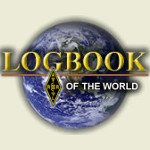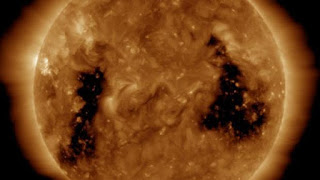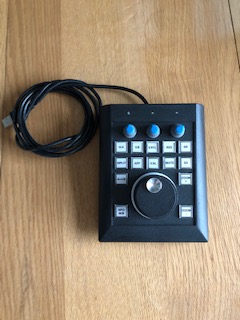 The Myth of VHF Line-Of-Sight
The Myth of VHF Line-Of-Sight
When we teach our Technician License class, we normally differentiate between HF and VHF propagation by saying that HF often exhibits skywave propagation but VHF is normally line-of-sight. For the beginner to ham radio, this is a reasonable model for understanding the basics of radio propagation. As George E. P. Box said, “All models are wrong, but some are useful.”
In recent years, I’ve come to realize the limitations of this model and how it causes radio hams to miss out on what’s possible on the VHF and higher bands.
Exotic Propagation Modes
First, let me acknowledge and set aside some of the more exotic propagation modes used on the VHF and higher bands. Sporadic-e propagation allows long distance communication by refracting signals off the e-layer of the ionosphere. This is very common on the 6-meter band and less so on the 2-meter band. I like to think of this as the VHF bands trying to imitate HF. Tropospheric ducting supports long distance VHF communication when ducts form between air masses of different temperatures and humidities. Auroral propagation reflects the radio signal off the auroral ionization that sometimes occurs in the polar regions. Meteor scatter reflects signals off the ionizing trail of meteors entering the earth’s atmosphere. Earth-Moon-Earth (EME) operation bounces VHF and UHF signals off the moon to communicate with other locations on earth. These are all interesting and useful propagation mechanisms for VHF and higher but not the focus of this article.
Improved Line-of-Sight Model
 Now let’s take a look at more “normal” VHF propagation that occurs on a daily basis, starting with the simple line-of-sight propagation model. The usual description of line-of-sight VHF is that the radio waves travel a bit further than the optical horizon (say 15% more) . Let’s refer to this as the Line-of-Sight (LOS) region where signals are usually direct and strong. What is often overlooked is that beyond the radio horizon, these signals continue to propagate but with reduced signal level. Let’s call this the Non-Line-of-Sight (NLOS) region. The key point is that the radio waves do not abruptly stop at the edge of the LOS region…they keep going into the NLOS region but with reduced signal strength. Now I will admit that this is still a rather simplistic model. Perhaps too simplistic. I’m sure we could use computer modeling to be more descriptive and precise, but this model will be good enough for this article. All models are wrong, but some are useful.
Now let’s take a look at more “normal” VHF propagation that occurs on a daily basis, starting with the simple line-of-sight propagation model. The usual description of line-of-sight VHF is that the radio waves travel a bit further than the optical horizon (say 15% more) . Let’s refer to this as the Line-of-Sight (LOS) region where signals are usually direct and strong. What is often overlooked is that beyond the radio horizon, these signals continue to propagate but with reduced signal level. Let’s call this the Non-Line-of-Sight (NLOS) region. The key point is that the radio waves do not abruptly stop at the edge of the LOS region…they keep going into the NLOS region but with reduced signal strength. Now I will admit that this is still a rather simplistic model. Perhaps too simplistic. I’m sure we could use computer modeling to be more descriptive and precise, but this model will be good enough for this article. All models are wrong, but some are useful.
WORKING the LOS and NLOS Regions
Let’s apply the model for Summits On The Air (SOTA) VHF activations. If we are only interested in working the LOS region, we won’t need much of a radio. Even a handheld transceiver with a rubber duck antenna can probably make contacts in the LOS region. It’s still worth upgrading the rubber duck antenna to something that actually radiates to improve our signal (such as a half-wave antenna). We may pick up some radio contacts in the NLOS region as well but our success will be limited.
To improve our results in the NLOS zone, we need to increase our signal strength. We are working on the margin, so every additional dB can make enough difference to go from “no contact” to “in the log.” Think about another radio operator sitting in the NLOS zone but not quite able to hear your signal. Your signal is just a bit too weak and is just below the noise floor of the operator’s receiver. Now imagine that you improve your signal strength by 3 dB, which is just enough to get above the noise and be a readable signal. You’ve just gone from “not readable” to “just readable” with only a few dB improvement.
What can we do to improve our signal levels? The first thing to try is improving the antenna, which helps you on both transmit and receive. I already mentioned the need to ditch the rubber duck on your HT. My measurements indicate that a half-wave vertical is about 8 dB better than a typical rubber duck. This is only an estimate…performance of rubber duck antennas vary greatly. A small yagi (3-element Arrow II yagi) can add another 6 dB improvement over the half-wave antenna, which means a yagi has about a 14 dB advantage over a rubber duck.
On the other hand, if you believe that your VHF radio is only Line-of-Sight, then there is no reason to work on increasing its signal level. The radio wave is going to travel to anything within the radio horizon and then it will magically stop. This is the myth that we need to break.
More Power
When doing SOTA activations, I noticed that I was able to hear some stations quite well but they were having trouble hearing me. Now why would this be? Over time, I started to realize these stations were typically home or mobile stations running 40 or 50 watts of output. This created an imbalance between the radiated signal from my 5W handheld and their 50 watts. In decibels, this difference is 10 dB. Within the LOS region, this probably is not going to matter because signals are strong anyway. But when trying to make more distant radio contracts into the NLOS zone, it definitely makes a difference. So I traded my HT for a mini-mobile transceiver running 25W. See the complete story in Chapter: More Power For VHF SOTA.
Weak Signal VHF
Of course, this is nothing new for serious weak-signal VHF enthusiasts. They operate in the NLOS region all of the time, squeezing out distance QSOs using CW, SSB and the WSJT modes. They generally use large directional antennas, low noise preamps and RF power amplifiers to improve their station’s performance. They know that a dB here and a dB there adds up to bigger signals, longer distances and more radio contacts. A well-equipped weak-signal VHF station in “flatland geography” can work over 250 miles on a regular basis…no exotic propagation required.
Now you might think that FM behaves differently, because of the threshold effect. When FM signals get weak, they fade into the noise quickly…a rather steep cliff compared to SSB which fades linearly. FM has poor weak-signal performance AND it fades quickly with decreasing signal strength. This is why it is not the favored modulation for serious VHF work. But the same principle applies: if we can boost our signal strength by a few dB, it can make the difference between making the radio contact or not.
So VHF is not limited to line-of-sight propagation…the signals go much further. But they do tend to be weak in signal strength so we need to optimize everything under our control to maximize our range.
73, Bob K0NR
The post The Myth of VHF Line-Of-Sight appeared first on The KØNR Radio Site.
Bob Witte, KØNR, is a regular contributor to AmateurRadio.com and writes from Colorado, USA. Contact him at [email protected].
 LHS Episode #270: Logbook of the World Deep Dive
LHS Episode #270: Logbook of the World Deep Dive

Welcome to the latest episode of Linux in the Ham Shack. In this episode, the hosts take a deep dive into the ARRL application Logbook of the World. It's a logging application with two components: the online database and statistical analysis tools at the ARRL site and the TrustedQSL cross-platform application for managing certificates, encrypting and uploading QSO data and more. LHS takes a look at all of its features, caveats, uses and more. Thank you for listening.
73 de The LHS Crew
Russ Woodman, K5TUX, co-hosts the Linux in the Ham Shack podcast which is available for download in both MP3 and OGG audio format. Contact him at [email protected].
 SDR Transceiver up for sale!
SDR Transceiver up for sale!
- Independent RX path based on DDC (Direct Down-Conversion) architecture
- Independent TX path based on DUC (Direct Up-Conversion) architecture
- 2 software RXs + SubRX for each of them (4 slices total) + independent wide-band Band-scope up to 80 MHz
- Remote control operation, using it, you connect PTT and CW-key to the E-Coder panel. Microphone and E-Coder are connected to the remotely set up PC
- TCI interface or seamless connection with third-party software like SDC (with its own Skimmer), LogHX, SWISSLOG and RUMlog, more are coming
- Professional TX processing module provides the most advanced tuning capability for voice operation
- ExtCTRL connector to control external devices with 8 powerful keys with open collector
- ALC connector for external power amplifiers*
- Supports use of VHF transverters**
- An opportunity to use the transceiver as a signal generator via DAC OUT connector (SMA connector)
- An opportunity to use external filters in the middle of the RF path, using ADC IN and RX OUT (SMA connector)
- Small delay in CW mode (about 10 ms)
- Input for external 10 MHz reference oscillator
- An opportunity to use the transceiver in SO2V mode
- Full duplex or half duplex modes***
- Antenna switch with 2 HF antenna connectors and separate VHF antenna connector (Mini UHF connectors)
- Internal power-meter for HF and VHF bands and SWR-meter for HF band
- Ethernet LAN interface provides fast and reliable connection to PC
- 20 watts on HF and 8 watts on VHF.
- 14 programable buttons with 60 possible programming options
- 3 programable encoder knobs with 13 possible programming options
- 1 optical encoder tuning knob
 |
| 2 Receivers in action |
 |
| All cables |
 |
| Rear view |
Mike Weir, VE9KK, is a regular contributor to AmateurRadio.com and writes from New Brunswick, Canada. Contact him at [email protected].
 Ham College 49
Ham College 49
Ham College episode 49 is now available for download.
General Amateur Radio Exam part 20. More on modulation. Coaxial cable loss explored.
1:07:03
George Thomas, W5JDX, is co-host of AmateurLogic.TV, an original amateur radio video program hosted by George Thomas (W5JDX), Tommy Martin (N5ZNO), Peter Berrett (VK3PB), and Emile Diodene (KE5QKR). Contact him at [email protected].
 ICQ Podcast Episode 286 – Peanut the D-Star App
ICQ Podcast Episode 286 – Peanut the D-Star App
In this episode, Martin M1MRB is joined by Leslie Butterfield G0CIB, Edmund Spicer M0MNG and Ed Durrant DD5LP to discuss the latest Amateur / Ham Radio news. Colin M6BOY rounds up the news in brief and this episode’s feature is Peanut the Dstar App.
ICQ AMATEUR/HAM RADIO PODCAST DONORS
We would like to thank Keith Schlottman (KR7RK) and Richard Perzyna (G8ITB) along with our monthly and annual subscription donors for keeping the podcast advert free. To donate, please visit - http://www.icqpodcast.com/donate
- Student Promotes Ham Radio
- Bloomington South School on the Air
- Public Consultation on Electromagnetic Field Regulations
- PocketRxTx v3 Released
- Geoffrey Starks Sworn in as FCC Commissioner
- Nominate for CWops Award
Colin Butler, M6BOY, is the host of the ICQ Podcast, a weekly radio show about Amateur Radio. Contact him at [email protected].
 LHS Episode #269: The Weekender XXIII
LHS Episode #269: The Weekender XXIII

Welcome to our latest edition of The Weekender. In this episode, the hosts discuss the usual blend of hedonism mixed with some upcoming amateur radio contests and special event stations, interesting Linux distributions, open-source events and news, interesting discussion and much more. Thank you for being a listener. We appreciate each and every one of you!
73 de The LHS Crew
Russ Woodman, K5TUX, co-hosts the Linux in the Ham Shack podcast which is available for download in both MP3 and OGG audio format. Contact him at [email protected].
 CLE240 Results
CLE240 Results
 |
| courtesy: NOAA |
Last weekend’s CLE240 saw mediocre propagation for North America and European listeners alike.
It seems that our monthly CLE schedule continues to be synced with the Sun’s monthly rotational period that has been regularly lining us up with the same massive coronal hole, elevating earth-directed solar wind speeds now for several months.
Several CLE participants in the USA commented on the lack of any propagation into BC, further fueling my long-held belief that BC seems particularly sensitive to any geomagnetic activity in the auroral zone to our north. The auroral activity always seems to dip further to the south here for some anomalous reason, as listeners just a few hundred miles to the south or southeast see far less absorption than is observed here.
With a few exceptions, the main effect of these conditions is to largely kill the normal east-west propagation path and just allow single-hop signals from the south or the SE/NW to dominate. Typically, the path to the Pacific is not affected and can often be enhanced.
As a side observation, this past weekend was also the CQWW 160m DX contest and, as one left-coaster commented, conditions were the “worst seen in 10 years”. One would expect to see much better conditions and a much quieter Sun at this point in the solar cycle!
With fingers crossed for better propagation during the next CLE, here is what was logged over the three-night listening event from my location here in BC’s Southern Gulf Islands using a Perseus SDR and an Inverted-L antenna resonated to 400 kHz:
26 05:00 385 QV Yorkton, SK, CAN
26 07:00 385 OCC Yakutat, ALS
26 09:00 385 MR Pacific Grove, CA, USA
26 09:00 385 EHM Cape Newenham, ALS
27 07:00 385 CPZ Chaparrosa Ranch, TX, USA
26 07:00 386 SYF St. Francis, KS, USA
26 09:00 386 HAU Helena, MT, USA
26 06:00 388 OK Preston, OK, USA
26 07:00 388 MM Fort Mc Murray, AB, CAN
26 07:00 388 JW Pigeon, AB, CAN
26 06:00 388 CDX Somerset, KY, USA
26 06:00 389 YWB Kelowna, BC, CAN
26 04:00 389 TW Twin Falls, ID, USA
26 07:00 389 CSB Cambridge, NE, USA
26 07:00 390 HBT Sand Point, ALS
26 11:00 390 AES Northway, ALS
26 04:00 391 TK Telkwa, BC, CAN
26 11:00 391 GXD Nacogdoches, TX, USA
26 07:00 391 EEF Sisters Island, ALS
26 06:00 391 DDP Dorado, PTR
26 09:00 392 ZFN Tulita, NT, CAN
26 05:00 392 PNA Wenz, WY, USA
26 05:00 392 ML Charlevoix, QC, CAN
26 08:00 392 FMZ Fairmont, NE, USA
26 10:00 393 UKS Kosrae, FSM
26 04:00 394 RWO Kodiak, ALS
26 07:00 394 DQ Dawson Creek, BC, CAN
26 07:00 395 YL Lynn Lake, MB, CAN
26 04:00 395 ULS Ulysses, KS, USA
26 07:00 395 5V Drumheller, AB, CAN
26 07:00 396 YPH Inukjuak, QC, CAN
26 05:00 396 CRS Corsicana, TX, USA
26 05:00 396 CMJ Ketchikan, ALS
26 07:00 397 ZSS Saskatoon, SK, CAN
27 12:00 397 SB San Bernardino, CA, USA
26 10:00 398 YOD Cold Lake, AB, CAN
26 06:00 398 3D Cumberland House, SK, CAN
26 11:00 399 ZHD Dryden, ON, CAN
26 11:00 399 SRI Pribilof, ALS
A summary of results for all participants can be found here, at the ndblist info site.
Steve McDonald, VE7SL, is a regular contributor to AmateurRadio.com and writes from British Columbia, Canada. Contact him at [email protected].















